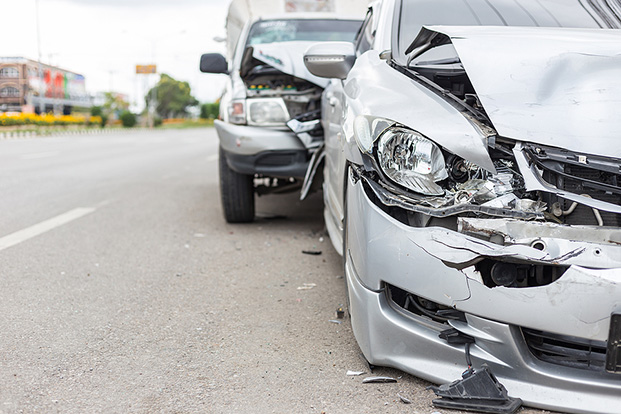What to Do After a Car Accident: A Step-by-Step Guide
January 8, 2025
When you’re involved in a car accident, your full coverage auto insurance policy can help protect you from financial liability.
Knowing what to do immediately after an accident and how to file a claim can help make this experience less stressful overall. Here’s what you need to know.
At the Scene
Once an accident occurs, stay calm and do your best to protect yourself and others in the vehicle. These steps can help you get through the problem.
1. Stay Safe
If possible, pull your car over to the side of the road or into a nearby parking lot. Check-in with others in your vehicle. Are there any injuries? Are you safe where you are? If you need help, call 9-1-1 to report your emergency. Don’t move anyone with an injury, and if you can’t get the vehicle to a safe location out of traffic, stay inside your car.
2. Contact the Police
File a police report, even if the accident is minor. Filing a police report can help you during a lawsuit and may be essential for filing a claim with your insurance company. Once the police report has been filed, you can ask for a copy of it at the station. Get information about how to do this from the law enforcement officer who helps you on the scene.
3. Take Pictures
Take pictures that show what happened. Be sure to include pictures of the license plates of the other vehicle, the location where the accident occurred, the weather conditions where you’re at, the passengers in the vehicle, and the condition of the vehicles themselves.
3. Exchange Information
Exchange information with the other driver. Get their name, address, phone number, license plate number and insurance information. While you’re doing this, avoid admitting fault or apologizing. Saying anything that can admit fault may muddy the waters if there is a dispute over who caused the accident.
After the Accident
Once the accident has occurred, it’s time to file a claim with your insurance company.
1. Contact Your Insurer
Contact your insurer to provide them with information about the accident. Your insurance company may ask for a variety of information including:
- Other driver contact and insurance information
- Photos of the accident
- Location, time of day, and weather conditions at the site of the accident
- Names of the officers that collected the information at the scene
- Police report
2. Understand Your Policy
Know what your policy covers and what your responsibilities are. If you have liability-only insurance, your policy will only cover the other driver’s vehicle if you are at fault, and will not cover your own.
If you have full coverage auto insurance, your policy will cover repair to your vehicle minus the amount of your deductible. You’ll need to know how much your deductible is. Your insurance policy may also cover the cost of renting a vehicle while your car is being repaired.
3. Work With the Adjuster
Your insurance agency will likely send an adjuster to check on the status of your vehicle. They may also request an estimate for repairing your car. Work with your adjuster to ensure that your insurance agency will get the information it needs to repair your vehicle.
4. Repair Your Vehicle
Finally, it’s time to repair your vehicle. You can choose the auto repair shop that does the work. Your insurance company may pay your mechanic directly, or they may pay you and let you pay the mechanic.
If your vehicle has been totaled, your policy may pay you the value of the vehicle (minus the deductible) and you will be responsible for buying a new vehicle yourself.
Get the Best Auto Insurance Policy For You
Your auto insurance policy can protect you from financial distress after an accident. Find the best auto insurance policy for you. Call today to get started.
